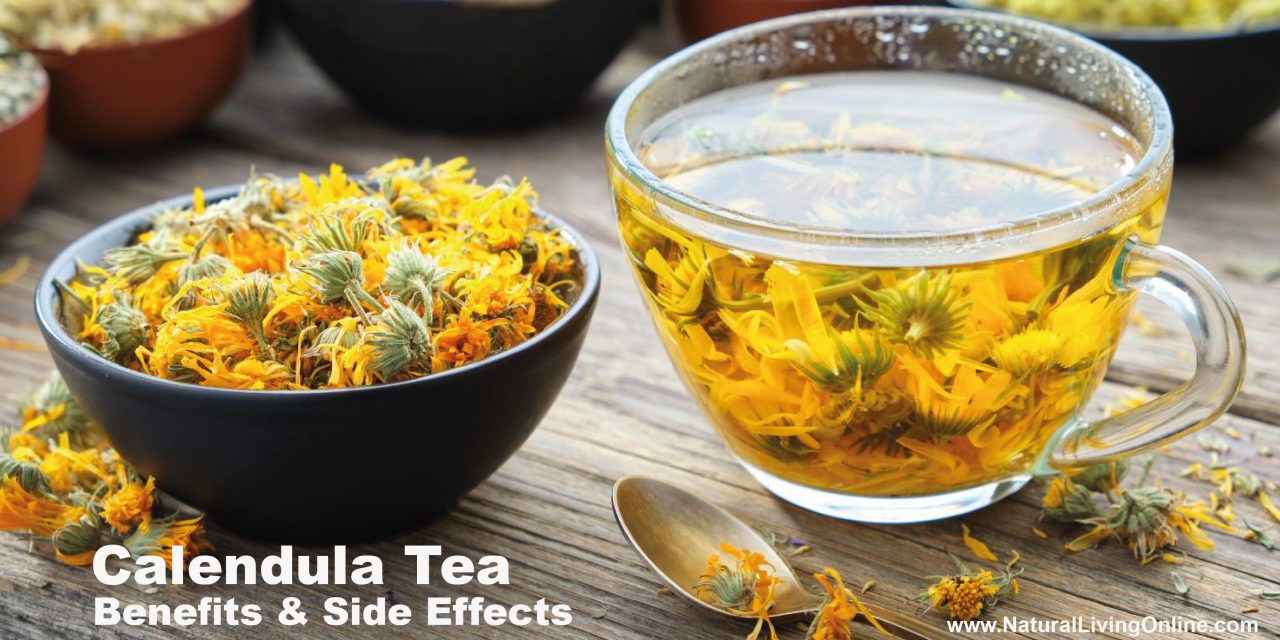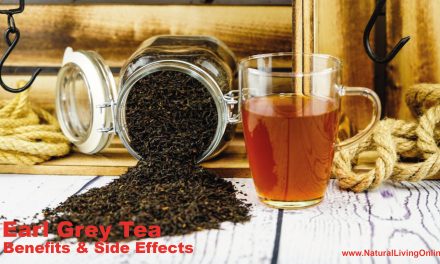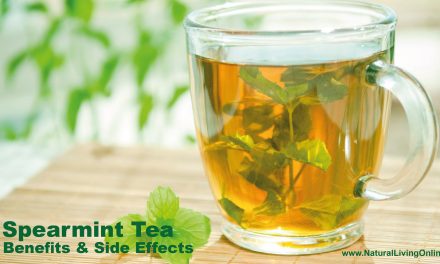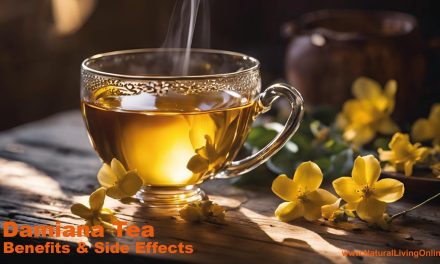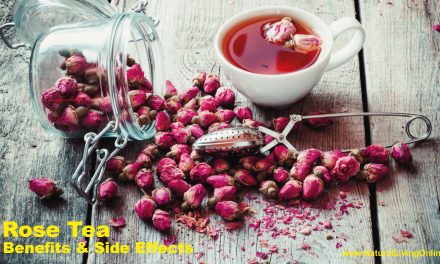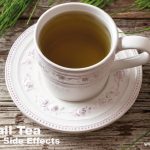Calendula tea comes from the bright yellow and orange flowers of the calendula plant. People have used these flowers for centuries to make a soothing drink. The tea has a mild, slightly sweet taste and a light floral scent.
Drinking calendula tea may help reduce inflammation and fight infections in the body. Some studies suggest it could boost the immune system and aid wound healing. The tea contains antioxidants that may protect cells from damage.
Many enjoy calendula tea for its potential skin benefits. Applying it to the skin might help with minor cuts, burns, and rashes. Some people drink the tea to ease stomach issues or menstrual cramps. More research is needed to confirm all of these effects.
Key Takeaways
- Calendula tea is made from calendula flowers and may have anti-inflammatory properties
- The tea contains antioxidants and could help with skin health and wound healing
- Potential benefits include immune support and easing digestive issues, but more studies are needed
Historical and Botanical Overview of Calendula
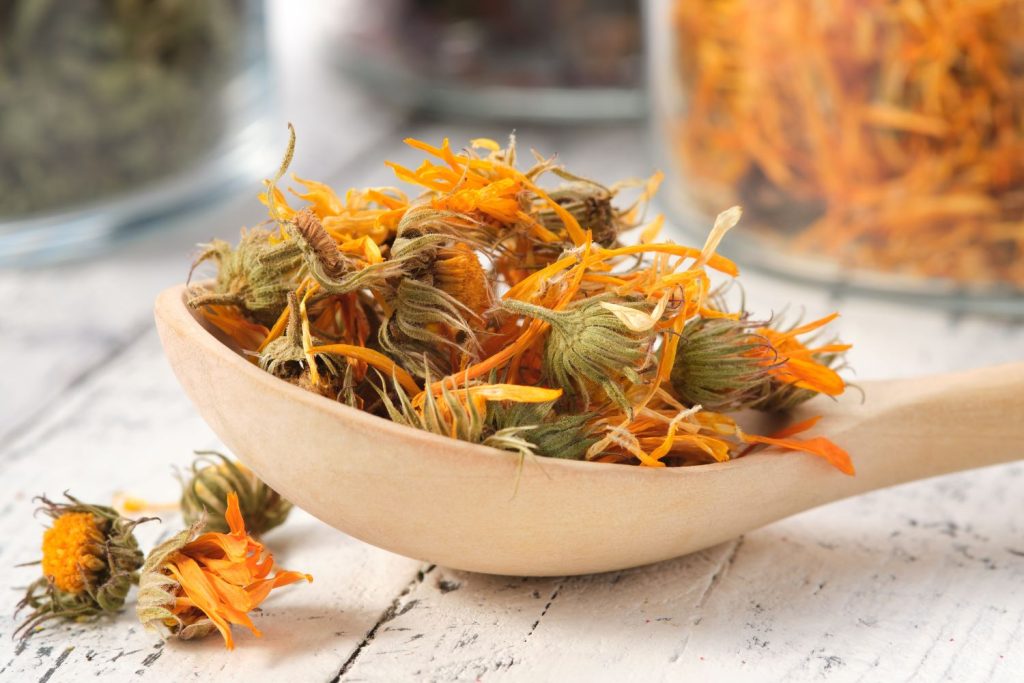
Calendula has a long history of use and distinct botanical features. This bright flower has been valued for centuries in various cultures for its beauty and medicinal properties.
The Heritage of Calendula
Calendula, also known as pot marigold, has roots in ancient civilizations. The Romans used it to decorate altars, while Greeks made garlands from its flowers. In medieval Europe, calendula gained popularity for its healing properties.
The plant’s name comes from the Latin word “kalendae,” meaning the first day of the month. This refers to its long blooming period, as calendula flowers almost year-round in some climates.
Calendula has been used in traditional medicine systems worldwide. It was applied to wounds, skin conditions, and digestive issues. The bright yellow-orange petals were also used to color foods and fabrics.
Calendula Officinalis Plant Profile
Calendula officinalis belongs to the Asteraceae family, which includes daisies and sunflowers. It’s an annual herb that grows up to 80 cm tall. The plant has hairy stems and leaves.
Its most notable feature is the vibrant flowers. These can be single or double-layered, with colors ranging from pale yellow to deep orange. The flowers bloom from early summer to fall.
Calendula grows well in many climates. It prefers full sun but can tolerate partial shade. The plant is easy to grow and often self-seeds. Its flowers attract bees and butterflies, making it a good choice for pollinator gardens.
The dried petals of calendula are used to make teas, tinctures, and oils. These preparations contain various compounds that contribute to the plant’s medicinal properties.
Health and Therapeutic Benefits of Calendula Tea
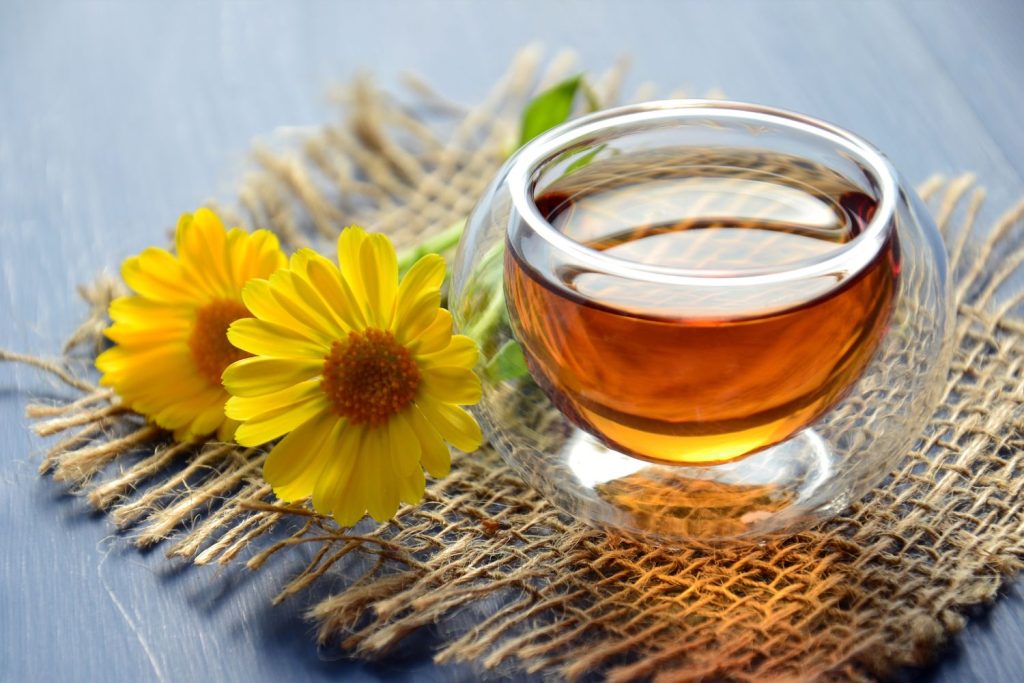
Calendula tea offers many health benefits. It can help with healing, reduce inflammation, and may even play a role in cancer prevention and digestive health.
Healing Properties and Wound Care
Calendula tea has powerful healing properties. It can speed up wound healing and help with skin issues. The tea contains compounds that boost skin cell growth and improve blood flow to wounds.
People use calendula tea to treat cuts, scrapes, and minor burns. It may also help with skin ulcers and bedsores. Some apply it directly to the skin, while others drink the tea.
Calendula tea can fight germs that cause infections. This helps keep wounds clean and allows them to heal faster.
Anti-Inflammatory Activity and Skin Health
The anti-inflammatory effects of calendula tea make it great for skin health. It can soothe irritated skin and reduce redness and swelling.
Calendula tea may help with skin conditions like:
The tea’s antioxidants protect skin cells from damage. This can slow down skin aging and keep skin looking healthy.
Some people use calendula tea as a face wash or in homemade skin care products.
Calendula Tea in Cancer Prevention
Calendula tea contains antioxidants that may help fight cancer. These compounds can protect cells from damage that can lead to cancer.
Some studies suggest calendula might slow the growth of cancer cells. It may be most helpful for skin cancers.
Drinking calendula tea could boost the immune system. This may help the body fight off cancer cells more effectively.
More research is needed to fully understand how calendula tea affects cancer. It should not replace standard cancer treatments.
Digestive Health and Calendula Tea
Calendula tea can support digestive health. It may help with:
- Stomach ulcers
- Acid reflux
- Bloating
- Constipation
The tea has a soothing effect on the digestive tract. This can reduce inflammation and ease stomach discomfort.
Calendula tea might also boost the growth of good bacteria in the gut. This can improve overall digestive function.
Some people drink calendula tea to relieve nausea or indigestion. It may be especially helpful after eating heavy meals.
Comparative Analysis of Calendula with Other Herbal Alternatives
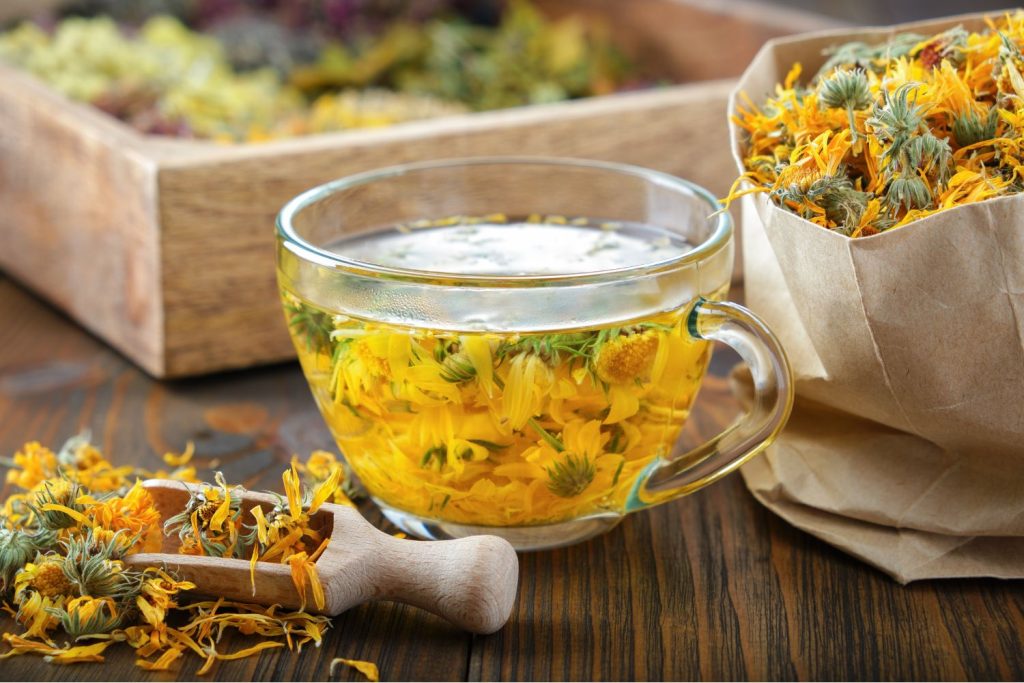
Calendula tea offers unique benefits compared to other popular herbal options. Let’s examine how it stacks up against chamomile and aloe in terms of health effects and uses.
Calendula vs Chamomile
Calendula and chamomile are both flowering plants used in herbal teas. Calendula has anti-inflammatory properties that may help reduce swelling. Chamomile is known for its calming effects.
Calendula tea has a slightly bitter, earthy taste. Chamomile has a mild, sweet flavor.
Both herbs can be used to make soothing teas for digestive issues. Calendula may be better for skin health, while chamomile excels at promoting relaxation and sleep.
Calendula contains more antioxidants than chamomile. This gives it an edge for immune support and fighting free radicals in the body.
Calendula and Aloe
Calendula and aloe are often used together in skincare products. Both plants have properties that may benefit the skin.
Calendula tea is consumed as a drink. Aloe is typically applied topically or taken as a juice.
Calendula has wound-healing abilities. It may help cuts and scrapes heal faster. Aloe is known for soothing burns and reducing skin irritation.
For internal use, calendula tea may aid digestion. Aloe juice is sometimes used as a laxative. Both have anti-inflammatory effects, but work in different ways.
Calendula is generally considered safe to consume regularly. Aloe should be used more sparingly due to potential side effects from long-term internal use.
Nutritional Profile and Bioactive Compounds in Calendula
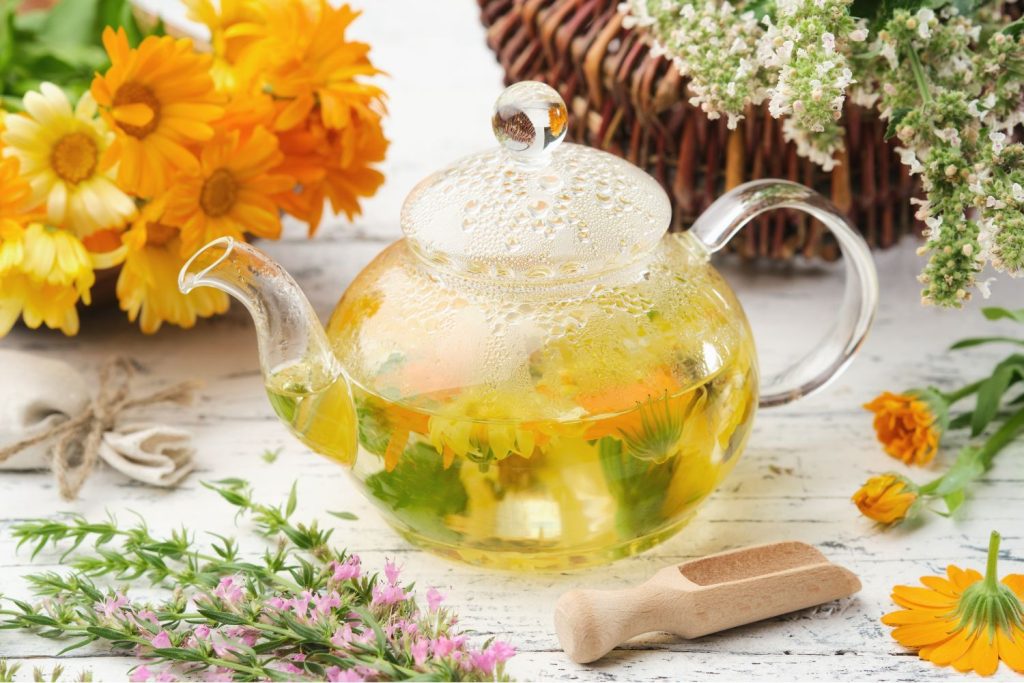
Calendula flowers contain a rich array of beneficial compounds. These include antioxidants, vitamins, and unique plant chemicals that give calendula its therapeutic properties.
Flavonoids, Triterpenes, and Polyphenols
Calendula flowers are packed with flavonoids, which are powerful antioxidants. These include quercetin, rutin, and kaempferol. Flavonoids help protect cells from damage.
Triterpenes give calendula anti-inflammatory effects. The main triterpenes are faradiol, taraxasterol, and lupeol. These compounds may ease swelling and pain.
Calendula also contains polyphenols like chlorogenic acid and caffeic acid. Polyphenols are antioxidants that support heart and brain health.
Vitamins and Carotenoids in Calendula
Calendula flowers provide vitamin C, which boosts the immune system. They also contain vitamin E, an antioxidant that protects cells.
The bright orange color of calendula comes from carotenoids. These include beta-carotene, lutein, and zeaxanthin. Carotenoids support eye health and act as antioxidants.
Calendula offers some minerals too. It contains small amounts of calcium, magnesium, and potassium. These minerals play roles in bone health, muscle function, and heart rhythm.
Precautions and Potential Side Effects of Calendula Tea
Calendula tea is generally safe for most people, but some precautions are necessary. Certain groups should be careful when consuming this herbal tea, and it’s important to be aware of possible side effects.
Guidelines for Safe Consumption
Pregnant and breastfeeding women should avoid calendula tea. There’s not enough research to prove its safety during pregnancy or while nursing.
People with allergies to plants in the daisy family might react to calendula. These include chrysanthemums, ragweed, and daisies.
It’s best to stop drinking calendula tea at least two weeks before any scheduled surgery. Calendula may interfere with blood clotting.
Don’t drink large amounts of calendula tea. Stick to 1-2 cups per day unless advised otherwise by a healthcare professional.
Addressing Allergies and Side Effects
Allergic reactions to calendula can include skin rashes, itching, or swelling. If you experience these symptoms, stop using calendula tea immediately.
Some people might feel drowsy after drinking calendula tea. Avoid operating heavy machinery or driving if you feel sleepy.
Calendula tea can sometimes cause stomach upset or nausea in sensitive individuals. If this happens, reduce your intake or stop using it.
Watch for signs of contact dermatitis if applying calendula topically. This can appear as redness, itching, or a rash on the skin.
Practical Tips for Using and Preparing Calendula Tea
Calendula tea offers many benefits and can be prepared in various ways. The following tips will help you get the most out of this versatile herb.
Preparation and Use of Calendula Tea
To make calendula tea, use 1-2 tablespoons of dried petals per cup of hot water. Steep for 10-15 minutes. Strain the tea before drinking.
For a stronger brew, use more petals or steep longer. Enjoy the tea hot or iced. Add honey or lemon for flavor if desired.
Calendula tea can be used externally too. Let it cool and apply to skin with a cloth for soothing relief. It may help with minor cuts, rashes, or irritation.
Make a large batch and store in the fridge for up to 3 days. Reheat or drink cold as needed.
Extracts, Tinctures, and Using Dried Petals
Calendula extract is more concentrated than tea. Mix a few drops with water or add to skincare products. Tinctures are alcohol-based and can be taken orally or applied topically.
Dried calendula petals have many uses beyond tea. Add them to bath water for a soothing soak. Sprinkle on salads for color and mild flavor.
Make calendula-infused oil by steeping dried petals in a carrier oil. Use this in homemade lotions or balms. Dried petals can also be ground into a powder for use in DIY face masks or body scrubs.
Store dried petals in an airtight container away from light and heat. They’ll keep for about a year when stored properly.
Frequently Asked Questions
What are the benefits of drinking calendula tea for the skin?
Calendula tea may improve the appearance of skin. It contains antioxidants that could help protect skin cells from damage. The tea might also promote skin healing and reduce inflammation.
Are there any side effects associated with consuming calendula tea?
Most people can drink calendula tea safely. Some may experience mild side effects like drowsiness. People with allergies to plants in the daisy family should be careful.
Can calendula tea improve digestive health?
Calendula tea might support digestive health. It may help soothe the digestive system and reduce inflammation in the gut. The tea could also promote healthy digestion.
What are the potential advantages of using calendula tea for spiritual practices?
Some people use calendula tea in spiritual rituals. They believe it may have calming properties that aid meditation. The tea’s bright color and pleasant aroma might also enhance spiritual experiences.
Is it safe to consume calendula tea on a daily basis?
Drinking calendula tea daily is generally considered safe for most people. It’s best to start with small amounts and see how your body reacts. Pregnant women should consult a doctor before regular use.
Could drinking calendula tea have a sedative effect?
Calendula tea might have mild sedative properties. Some people drink it to relax or improve sleep. However, more research is needed to confirm its effectiveness as a sleep aid.
References:
A review on phytochemistry and ethnopharmacological aspects of genus Calendula
Calendula Officinalis-An Important Medicinal Plant with Potential Biological Properties
In Vitro Evaluation of Antioxidant and Anti-inflammatory Potentials of Herbal Formulation Containing Marigold Flower (Calendula officinalis L.) Tea
A Review of Calendula officinalis – Magic in Science
This website does not provide medical advice.
All information provided on this website, and on associated social media networks, including but not limited to texts, images, and numbers are for general information purpose only. It is not intended as medical advice and it does not include all possible precautions, side effects, or interactions that may occur. Neither NaturalLivingOnline.com nor its author/founder take responsibility for how you use this information. Statements contained on NaturalLivingOnline.com have not been evaluated by the FDA. You should conduct thorough research via multiple sources and consult your physician or qualified doctor before using any essential oil or herbal remedy. Information on NaturalLivingOnline.com must not be relied upon for medical, legal, financial or other decisions.

